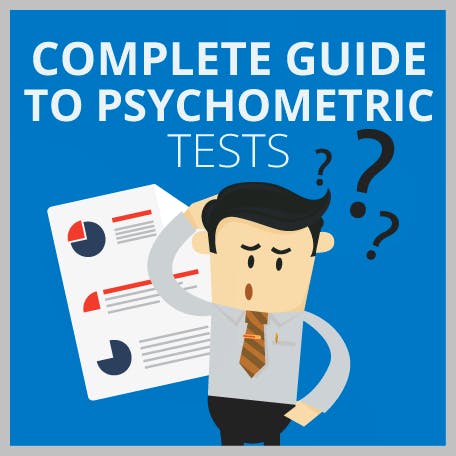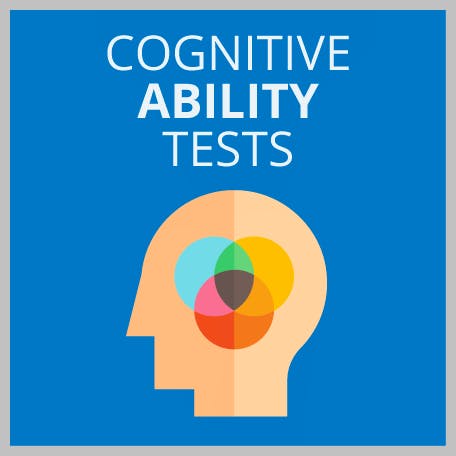Predictive Index Tests Fully Explained [With Example Questions + Answers]
Updated November 18, 2023
![Predictive Index Tests Fully Explained [With Example Questions + Answers]](https://www.datocms-assets.com/7756/1671731172-predictive-index-tests-none-x2.png?auto=%20compress%2C%20enhance%2Cformat&crop=focalpoint&fit=crop&fp-x=0.5&fp-y=0.5&h=300&w=300)
- What Is a Predictive Index Test
- How Are PI Tests Used?
- The Two Parts of Predictive Index Tests
- The Predictive Index Cognitive Assessment (PICA)
empty
empty
empty
- How Many Questions Are on the PICA?
- Predictive Index Sample Questions
empty
empty
empty
- The Predictive Index Behavioural Assessment
empty
empty
empty
empty
- What are the PI Behavioural Assessment Types?
empty
empty
empty
empty
- How Is the Predictive Index Test Scored?
- How to Prepare for the Predictive Index Test
- Frequently Asked Questions
- Final Thoughts
![Predictive Index Tests Fully Explained [With Example Questions + Answers]](https://www.datocms-assets.com/7756/1671731172-predictive-index-tests-none-x2.png?auto=%20compress%2C%20enhance%2Cformat&crop=focalpoint&fit=crop&fp-x=0.5&fp-y=0.5&h=300&w=300)
The Predictive Index (PI) test is a popular type of pre-employment testing used to accurately measure an individual’s cognitive ability and behavioral profile during the hiring process in a wide range of industries and organizations. They are most commonly used during the early stages of the recruitment process.
The PI cognitive test assesses verbal, numerical and analytical reasoning ability.
The PI behavioral test creates a behavioral persona that describes character traits and tendencies.
What Is a Predictive Index Test
The Predictive Index (PI) Test (previously known as the PLI test), is designed to measure cognitive ability and behavioral drives of prospective candidates for a role.
Employers understand the needs of a specific role within a company. Hiring managers can use the PI results to select suitable candidates that fit well.
The data can also be used to reorganize teams, impact projects or develop business strategies.
Designed by a company called Predictive Index, they are used by thousands of respected global organizations.
Companies known to use PI tests include:
- Microsoft
- Dell
- Chevron
- IKEA
- Subway
- IBM
- Nissan
- Canon
How Are PI Tests Used?
Predictive index Tests are used to test the mental ability, critical thinking skills and personality traits of candidates.
The results are used to match candidates who express the desired traits required in a particular role.
It offers an additional way of assessing candidates alongside their educational qualifications. This helps find those who are expected to perform at their best within the role.
The data can determine how effectively candidates work with others and their competence in learning new skills and procedures.
A predictive index assessment can also be used within organizations to promote employees and manage teams.
This can improve dynamics, increasing productivity and cohesion within the company.
The Two Parts of Predictive Index Tests
There are two types of Predictive Index tests.
- The Predictive Index Cognitive Assessment (PICA test)
- The Predictive Index Behavioural Assessment (PIBA test)
The PICA describes how well you cope with abstract, numerical and verbal reasoning to predict your potential success.
The PIBA creates a snapshot of your behavioral traits and personality to predict how well you fit with the organizational culture.
These two tests are often administered together to give hiring managers an overview of a candidate’s skills and personality.
The Predictive Index Cognitive Assessment (PICA)
The PICA focuses on evaluating cognitive abilities. The questions are related to the following three categories.
1. Verbal Reasoning
This section is about verbal logic. The questions determine an individual’s deductive ability and vocabulary knowledge.
The questions cover the following:
- Analogies
- Antonyms
- Analysis
The analysis questions present statements, and candidates must determine whether a conclusion is correct, incorrect or cannot be determined.
2. Numerical Reasoning
This section focuses on mathematical ability. It assesses numerical skills using basic to intermediate-level maths problems.
Most questions can be worked out mentally, but a calculator can be used if needed.
The questions cover the following:
- Lowest values
- Number series
- Number problems
3. Analytical Reasoning
This section uses a series of patterns or shapes. Candidates must choose the correct image as required by the question.
These questions relate to the following:
- Next in series
- Odd one out
- Analogy
How Many Questions Are on the PICA?
There are 50 questions in the PICA, and five questions are displayed at a time on the screen.
Each question carries an equal score weight.
Candidates have a strict time limit of 12 minutes. Use the clock at the top of the screen to keep track of the time.
You can move forward or back by clicking on the corresponding buttons at the bottom of the screen.
Predictive Index Sample Questions
Verbal Reasoning Sample Questions
1. Poetry is to literature as ______ is to art.
a) Cubism
b) Drawing
c) Writing
d) Philosophy
2. Which word means the opposite of 'ARROGANT'.
a) Scornful
b) Proud
c) Overbearing
d) Humble
3. Statement: In the UK, some schools are state-funded. All state-funded schools need to follow the National Curriculum.
Conclusion: No private schools follow the National Curriculum.
a) Correct
b) Incorrect
c) Cannot be determined based on the information available
1. If five people can execute 15 items in a checklist in 10 days, how many days will 15 people take to execute five items in the checklist?
a) Between one and two days
b) Between three and four days
c) Between five and six days
d) Greater than five days
2. What is the next number in the sequence?
11 | 44 | 99 | (?)
a) 133
b) 176
c) 113
d) 111
3. Identify the missing number in the sequence.
29 | 31 | (?) | 41 | 43
a) 33
b) 35
c) 36
d) 37
1. Which shape can be derived from the given figure by rotation and/or reflection?
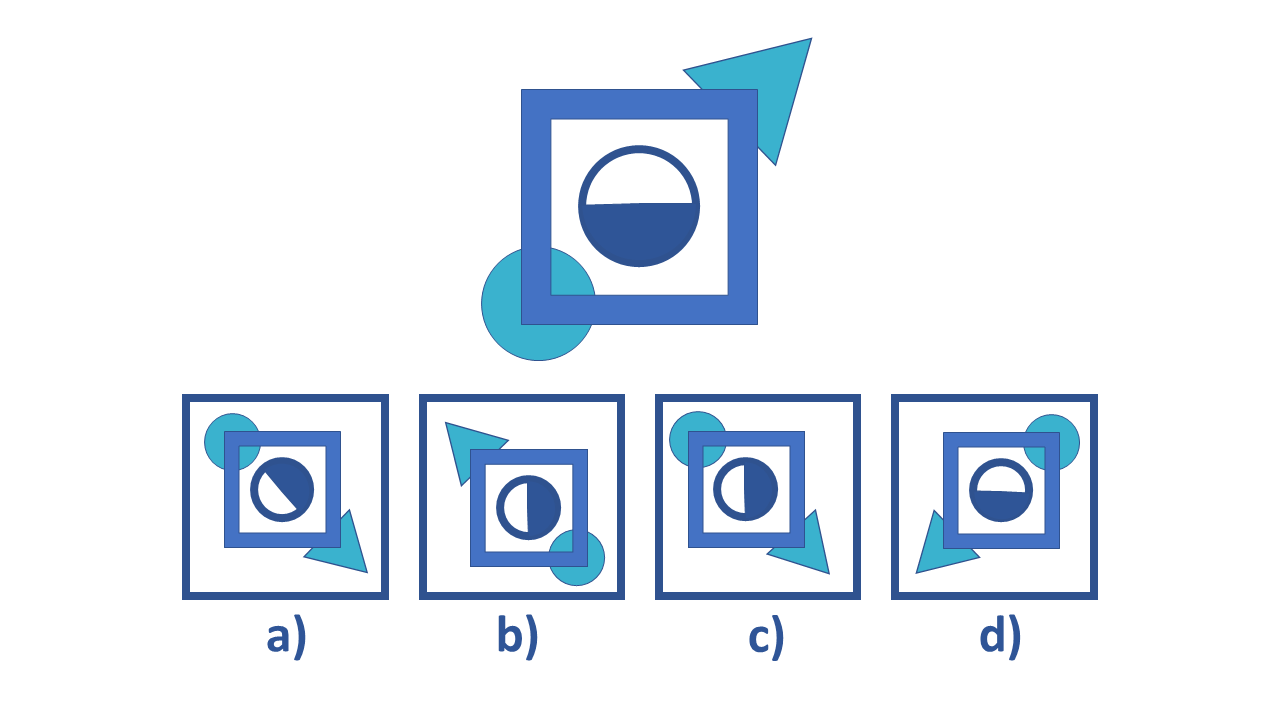
2. Identify the reflection of the given figure from the provided options.
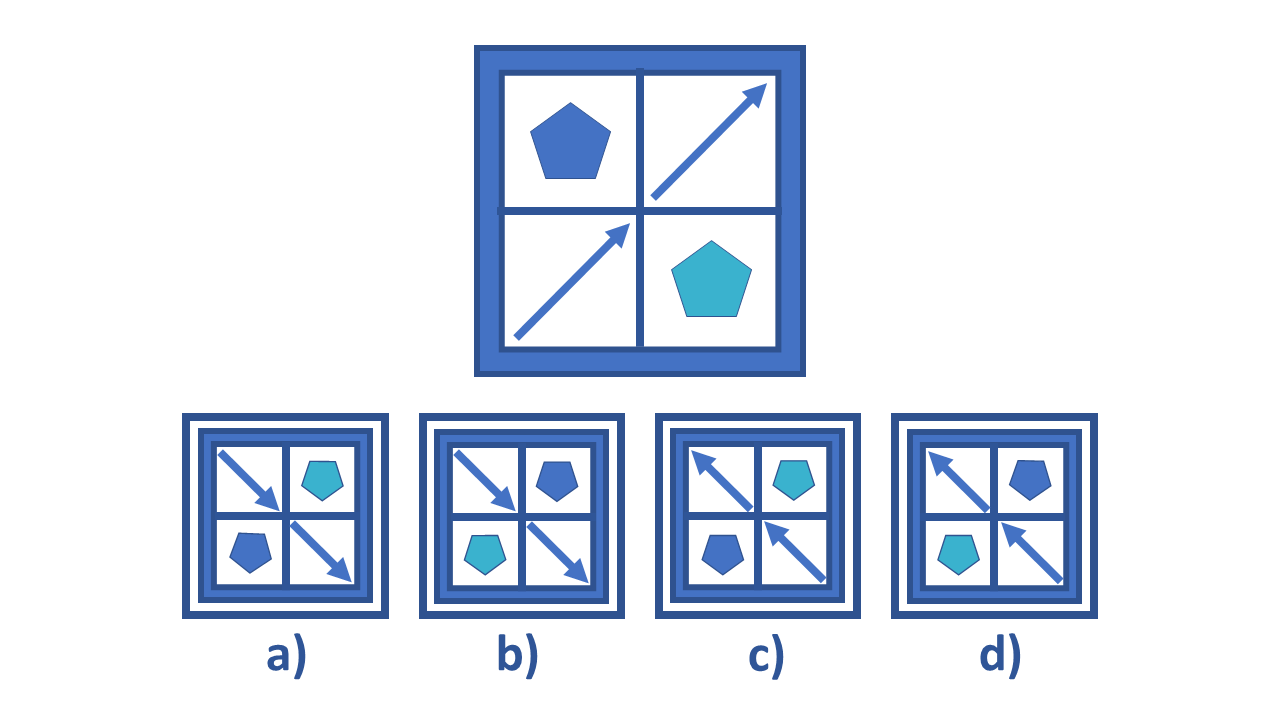
3. Identify the next figure in the following sequence.
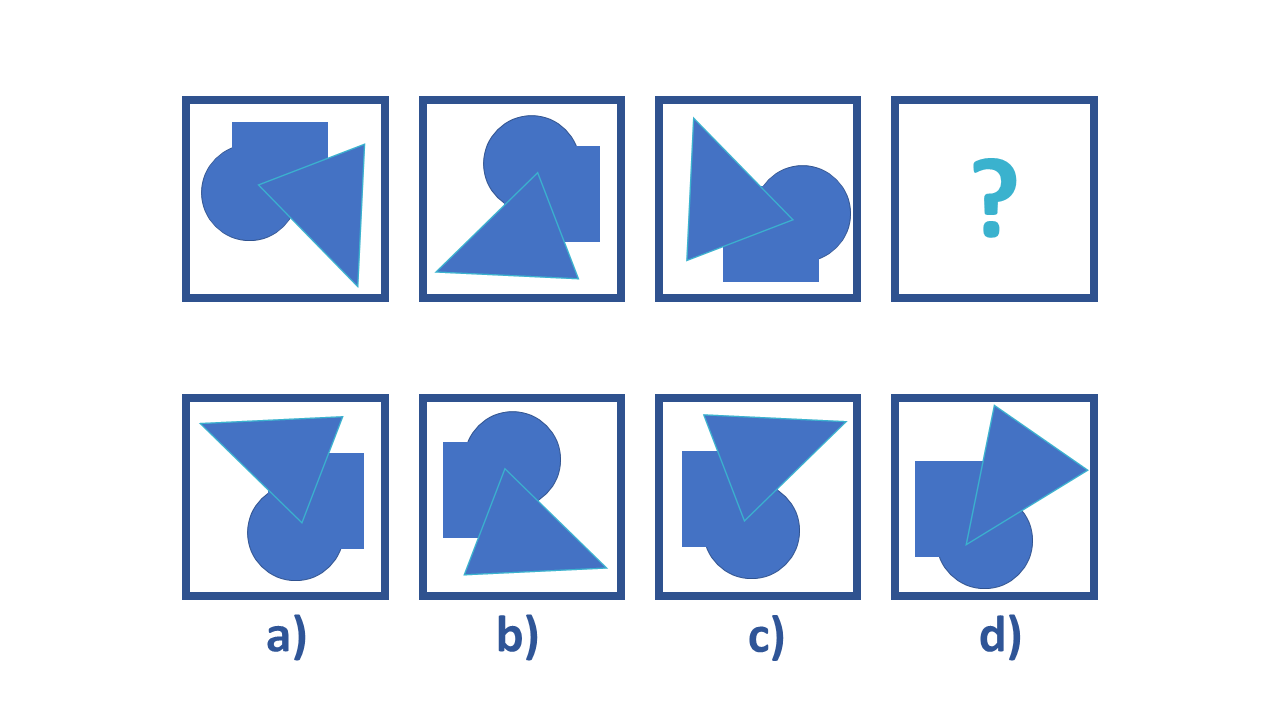
If you need to prepare for a number of different employment tests and want to outsmart the competition, choose a Premium Membership from JobTestPrep.
You will get access to three PrepPacks of your choice, from a database that covers all the major test providers and employers and tailored profession packs.
The Predictive Index Behavioural Assessment
The PIBA is a type of personality test that assesses behavioral traits. This helps employers know whether a candidate would be a good fit for their organization.
The personality assessment includes aspects that evaluate the ‘beneath the surface’ elements of a candidate’s behavioral traits. This highlights how they would react to situations occurring in the workplace.
As such, there are no wrong answers, but you should practice being honest with yourself and self-aware and consider how your answers might match (or not match) the role you are applying for.
The test covers four behavioral drives:
1. Dominance
This is the drive of an individual to exert influence on events, people and situations. The results range from independent to collaborative
Words that score highly for this trait include ‘self-confident’, ‘assertive’ and ‘determined.’ Low-scoring words are ‘cooperative’ and ‘accommodating.’
2. Extraversion
This focuses on the extent to which an individual can deal with other people. It shows how they are likely to behave in social interactions
The results show whether a person is more social or more reserved. High-scoring words include ‘outgoing’ or ‘talkative.’ Low-scoring words are ‘introspective’ and ‘serious.’
3. Patience
This shows whether a person is consistent and stable. The results show whether a person is more steady or driving
High-scoring words could be ‘calm’ and ‘relaxed.’ Lower-scoring words are ‘energetic’ or ‘intense.’
4. Formality
This ascertains how a person is likely to conform to a rule-based environment
The scale ranges from precise to flexible. High-scoring words are ‘strict’ and ‘accurate.’ Lower scoring words are ‘impulsive’ and ‘adaptable.’
Alongside these four areas, candidates are also assessed on two other traits known as Factor E and Factor M.
Factor E describes whether you make decisions objectively or subjectively.
Factor M measures your response levels. For example, if you selected too few or too many adjectives.
Candidates are given a list of adjectives. Each of these 86 words is linked with the four categories above.
Two tasks need to be completed. First, you need to select adjectives that describe how you think others expect you to behave at work.
Second, you need to select the adjectives you feel most describe who you are as a person.
You are given free choice to pick as many or as few adjectives as you want.
The PIBA is not timed and generally takes less than 10 minutes to complete.
What are the PI Behavioural Assessment Types?
On completion of the test, you are assigned a snapshot depicting the way you inherently think and work.
This is called a Reference Profile and is used to map an individual’s behavior to the overall organizational culture or brand persona.
There are 17 profile types that group people with similar drives. These are divided into 4 categories.
Analytical Profiles
These are more task-oriented people who work at a fast pace.
They include:
- Specialist – Introspective and very precise
- Strategist – Uses the big picture for decision-making
- Venturer – Takes risks and pushes boundaries
- Analyser – Self-disciplined with high standards
- Controller – Organised and follows structure
Persistent Profiles
These are people who prefer to work independently and focus on the task.
They include:
- Scholar – Creative and precise
- Individualist – Persistent and highly analytical
Social Profiles
These people are extroverted and people-oriented.
They include:
- Altruist – Cooperative and helpful
- Persuader – Motivational team-builder
- Promoter – Persuasive and charismatic
- Maverick – Visionary leadership qualities
- Captain – An independent problem solver
- Collaborator – Team player and friendly
Stabilising Profiles
These people prefer details and are structure oriented.
They include:
- Operator – Patient and informal
- Guardian – Precise and generous
- Adapter – Flexible and open to change
- Artisan – Reliable and accurate
How Is the Predictive Index Test Scored?
For the behavioral assessment, the scores for each of these factors typically range from 0 to 100.
Higher scores indicate a stronger inclination towards the corresponding factor. However, it's important to note that there is no ‘good’ or ‘bad’ score.
Based on an individual's scores across these four factors, the PI assessment generates a profile that provides insights into their workplace behaviors, communication style and approach to work.
This profile can be used to assess job fit, team dynamics, and potential areas for development.
The scores obtained from the Numerical Reasoning and Verbal Reasoning sections are often combined to provide an overall cognitive ability score.
This score reflects an individual's cognitive capabilities relative to a normative sample or benchmark. Higher scores indicate stronger cognitive abilities in the tested areas.
How to Prepare for the Predictive Index Test
There are several ways you can prepare for the Predictive Index Test. These tips are provided below:
Step 1. Practice
Take a predictive index practice test and it is likely that your scores will improve and the more confidence you will gain.
There are plenty of predictive index assessment practice tests available online. You can find free and premium options at JobTestPrep.
To improve your PI cognitive assessment scores, brush up on your verbal and numerical skills.
Make a note of particular questions you struggle with. Focus on these areas throughout your preparation.
Practice isn’t strictly necessary for the PI behavioral assessment. However, prepare some adjectives that might highlight you as the perfect person for the job.
Check the definition of keywords used in the person specification for the role. This can give you some hints as to what kind of person will be a good fit.
Step 2. Timings
Do not worry if you cannot complete all 50 questions. In fact, most test takers typically do not answer all of them.
What matters most is the accuracy linked to speed. Try and answer as many as you can within the time limit.
As you practice, try to reduce your response time per question. As you improve, you may be able to complete questions in 15 seconds.
The quicker you can address a question, the more chances you have of attempting additional questions and scoring higher.
Practice with a timer, so you do not feel the pressure of the time limit during your actual test.
Step 3. Focus
Concentrate fully on the test, and don’t get distracted. The more correct answers, the better chance of moving to the next stage of the recruitment process.
Make sure the questions you attempt are answered correctly. Marking is based solely on the questions answered correctly.
Questions aren’t ordered by difficulty or type, so don’t worry about the sequence of questions. One question is as good as the other, so far as scoring opportunities go.
As all questions carry the same marks, do not dwell more than your allotted time on a single question if you get stuck.
You always have the option to come back to the same question later in the test.
Step 4. Research
Research the types of behaviors expected from the employer. Reflect on these qualities in your answers.
This doesn’t mean you should portray yourself as being who you are not. However, it can be used effectively to identify yourself with the matching traits.
If you think it is worth it, start building on those qualities to blend in with the organizational culture of the company you are applying for.
There is no right or wrong way to take the PI behavioral assessment. Neither does the score indicate a pass or fail.
However, what is interpreted is the likelihood of how a respondent is expected to fit in a given role and the speed they would be expected to gain new knowledge.
Step 5. Wellbeing
The strict 12-minute time limit for the PICA can feel stressful. Practice mindfulness and relaxation techniques to help you remain calm on test day.
Don’t forget to eat a nutritious breakfast and have a glass of water on hand. This will help keep you in a focused state of mind.
Get plenty of sleep the night before, so you feel well-rested and can perform at your optimum.
Remember that predictive index assessments are only one aspect of your application.
Stay calm and answer as accurately and honestly as you can.
The Predictive Index (PI) test is a test used to identify character and personality traits.
It is a straightforward test that can be completed in around 10 minutes. It gives potential employers an insight into what type of person you are and whether you are a good fit for the company.
The PI behavioral assessment can’t be passed or failed.
It is an indication of what type of person you are and how you are likely to behave in the workplace. It is used to identify what motivates and drives you. This helps employees select those who are a good match for their company culture.
You can prepare for the Predictive Index test free at various sites online, such as JobTestPrep.
Prepare for the Predictive Index test by identifying adjectives that match your personality and what your prospective employer is looking for.
The Predictive Index (PI) behavioral assessment produces a character profile based on your personality type.
There are 17 different personality types, and you will be assigned one that matches the adjectives you selected in the test.
It’s not a case of a pass or fail. The answers need to meet the employers’ needs.
So if an employer wants to employ someone for a role that requires dominance, assertiveness and attention to detail, they would select the behavior profiles that most closely match these qualities.
The PI behavioral test only has two questions. You are provided with a list of 86 adjectives that could be used to describe an individual’s character.
Your first task is to select the words you think others would use to describe you at work. Then you need to choose the words that most closely reflect how you perceive yourself.
There are online tests available at JobTestPrep that can help prepare you for the Predictive Index tests. Practice each of the different styles of questions you will be asked to increase your chances of getting the best result.
A PI behavioral assessment is used to identify character traits and personality styles that most closely match the needs of the company.
It is used in the early stages of recruitment to filter the applicants most likely to succeed in a role.
The PI cognitive assessment is timed. The questions must be completed within 12 minutes.
Most candidates don’t manage to complete all the questions within this limit. The PI behavioral assessment is not timed, but it can generally be completed in around 10 minutes.
As the PI behavioral assessment isn’t a pass or fail result, it can’t be retaken.
The predictive Index states that the results are only valid for a few months, so if you applied for another role that required the test to be taken, you would be able to sit it again.
A complete guide to the PI behavioral test can be found at JobTestPrep.
This guide explains each of the behavioral drives in more detail and offers some useful tips for completing the test.
The PI behavioral assessment has been used by thousands of companies to support informed hiring decisions. As a psychological tool, it has been EFPA-certified.
The test has been created to meet the standards of the American Psychological Association (APA).
The purpose of the PI behavioral assessment is to determine if a candidate possesses the right personality for the job they are applying to.
Therefore, it is possible that the pi behavioral assessment questions and answers could be tailored to the job you are applying for.
Final Thoughts
The Predictive Index Tests are complex tests that showcase a candidate’s cognitive and behavioral profile.
To maximize your performance, adequate preparation is key.
Take advantage of the online sample tests to familiarize yourself with the types of questions you will need to tackle.
Remember that the PI behavioral assessment test is only one part of the wider screening process used by the company.



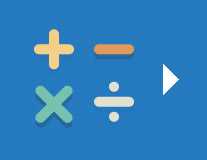




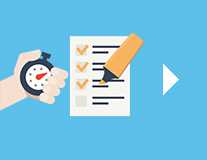
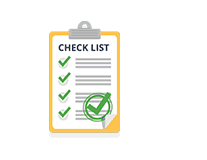
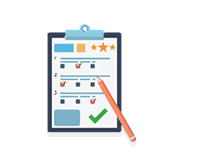
![Predictive Index Tests Fully Explained [With Example Questions + Answers]](https://www.datocms-assets.com/7756/1671731172-predictive-index-tests-none-x2.png?auto=compress%2C%20format%2C%20enhance%2Cformat&fit=crop&w=456)
